|
The Nintendo console everyone loves to hate
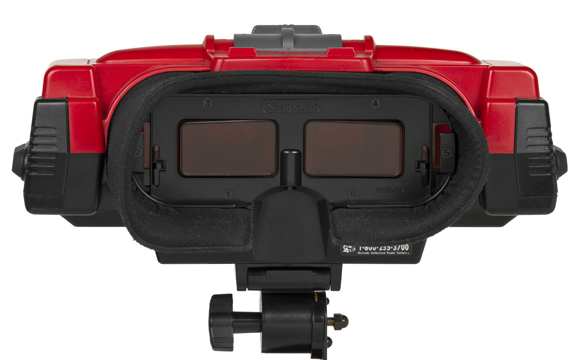
To a lot of gamers, the Nintendo dark ages of lackluster 3rd party support and poorly aging visuals began with the N64. This may be somewhat true if only looking at home consoles (and believing the N64 was terrible), but if one takes into account the entire Nintendo product spectrum, one other console stands as the most despised and misunderstood. That system is the Virtual Boy, Nintendo's only tabletop console. It saw the light of day during August 1995 and was promptly put back in early 1996, less than a year on retail shelves. It preceded the N64 and was forgotten by the time the 64-bit wonder was released to stores. This was odd as the Virtual Boy was going to eventually share shelf space with it. Much like any failure, there is much exaggeration to small truths in the Virtual Boy (as is true with the N64 as well).
Hardware 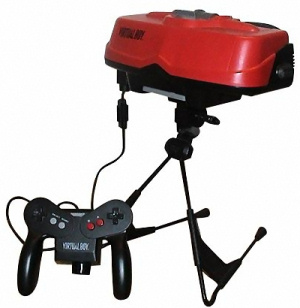
Much of what makes the Virtual Boy unique lies in its hardware. To this day it is one of Nintendo's oddest game systems, sharing very little design with similar hardware of the time. The console itself is commonly referred to as a headset because it contains two separate displays - one for each eye - that one sees by peering into the console, which is then mounted on a stand for use on a table, hence the term tabletop (which absolutely was a legitimate format of game console way back when!). The controller plugs into the headset, which then connects to a battery pack or AC adapter. It may sound convoluted both in theory and practice, but there was hardly anything else like the Virtual Boy on the market at the time, so Nintendo had to come up with their own designs, which resulted from facing cost limitations (no head tracking, bulky design required a stand, no head strap, etc).
The first unique feature anyone thinks of with the Virtual Boy is its red and black graphics. Seemingly everyone agrees this one particular flaw forever doomed the Virtual Boy, even those who have never even played one. There are also claims the red colors cause severe eye strain and headaches. Having used the Virtual Boy myself, the only way the graphics can hurt my eyes is for the system to not be calibrated properly. The focus and IPD have to be configured right, or your eyes will indeed hurt. This should be a no-brainer but most internet rumors leave out this detail. When properly focused, the Virtual Boy's graphics should appear very sharp and crisp, not blurry at all. In reality, the red graphics are not very hard on your eyes at all, they key is to keep the displays in perfect focus. I have played Virtual Boy for 3 hours straight many times and have suffered no ill effects. You can even wear glasses while using it, or you can try adjusting the focus for your eyes without glasses. For 1995, the VB is surprisingly good looking; it was a far cry from the typical LCD handhelds of the day. Keep in mind, Game Boy Pocket was not released yet; the only Game Boy available was still the original with its green and black screen.
The LED displays themselves are something quite interesting to note. Due to LEDs still being an expensive technology at the time, Nintendo designed the Virtual Boy to use the smallest number of LEDs possible per display. 1 LED wide by 224 LEDs high, each LED being a pixel. These 1 dimensional screens rapidly display each "scanline" (384 total) at a rate of 50.20Hz across oscillating mirrors that each has assigned to it, for a total resolution of 384x224 per display. This unique method of display is fast enough for the human eye to not perceive individual "scanlines" being drawn, thus a full image results. The oscillating mirrors are why one can hear a humming sound from within the Virtual Boy while it's turned on. The sheer engineering creativity that went into the Virtual Boy's video displays is simply astounding. Never again would Nintendo tread so close to the cutting edge of technology.

For the most part the Virtual Boy system as a whole is quite sturdy and is actually modular in design, intended for making refurbishment easy. The stand has a couple weak points where it can break, but it also works well when properly set up. (I find tilting the stand forward so you look down into the VB on a good table is the least straining on the neck and back). The other significant aspect of failure is the LED display ribbon cables, which are simply glued into place. The glue dries over time, making the displays glitch up or stop working. It can be fixed but it's a terribly flawed design which makes finding a working VB a difficult prospect. Nintendo should be ashamed for cheaping out so badly on this aspect.
Like the rest of the console, the cartridges are weird too. Every Nintendo console either used a double or single sided PCB edge for its cartridges. The Virtual Boy is completely different. Instead, it uses a specific size of IDE-type connector, like what a hard drive or PC card might use. They're a bit bigger than regular Game Boy cartridges and the special 60 pin connector allows for more addressable ROM space as a result, a total of 128Mbit without bankswitching or mapping. Retail games used 16Mbit at the most. Had the Virtual Boy been successful, there would have been some very impressive games released for it, if only judging from the cartridge. Every VB cartridge came with a dust cap. They're somewhat useful and complete the look of the cartridge, but they're easy to lose so they've become hard to find over the years. They can also get stuck inside the Virtual Boy cartridge slot. Doesn't Nintendo have people to prevent this sort of oversight from happening? At least there's a couple notches on top of the Virtual Boy you can rest the dust cap on while you're playing.
For all the genuinely good aspects already mentioned, perhaps the biggest actual flaw was the simple fact the Virtual Boy wasn't virtual in any sense of the word. It's not necessarily the Virtual Boy's fault; it was a victim of marketing. Virtual Reality was a buzzword of the time, Nintendo figured people would buy into an experimental console like the Virtual Boy if they played up that angle, even if it clearly wasn't finished. It uses a stand, lacks immersion, has no head tracking or advanced polygon rendering, so it definitely wasn't virtual. But it's incredibly good at stereoscopic 3D. In a way, that was the only thing the Virtual Boy did particularly well. There's nothing inherently wrong with that, but Nintendo's inept marketing helped to give the Virtual Boy an early grave. I will say though, Virtual Boy is an awesome name, more cool than 3D Boy.
Although the Virtual Boy's mechanical and structural flaws have contributed to its lack of appeal, it deserves credit for containing the purest essense of Nintendo's ability to utilize the most cutting edge technology of the time. In that sense, the Virtual Boy is not really a failure, it was simply far too ahead of its time. Assuming blue and green LEDs could come down in price enough, Virtual Boy would have been better off closer to 2000 with a 3 color display instead of red only. Alas, Nintendo wanted to get back its money spent on Virtual Boy development, so the console was released too early. Despite being woefully unfinished, the Virtual Boy is still quite usable and has its qualities in construction and design.
Curiously, the Virtual Boy completely lacks a power LED. The power switch on the controller has an orange sticker helping to indicate power is on (like the Turbo Grafx-16), but it is not an actual LED.
Score: 3/5
Controller 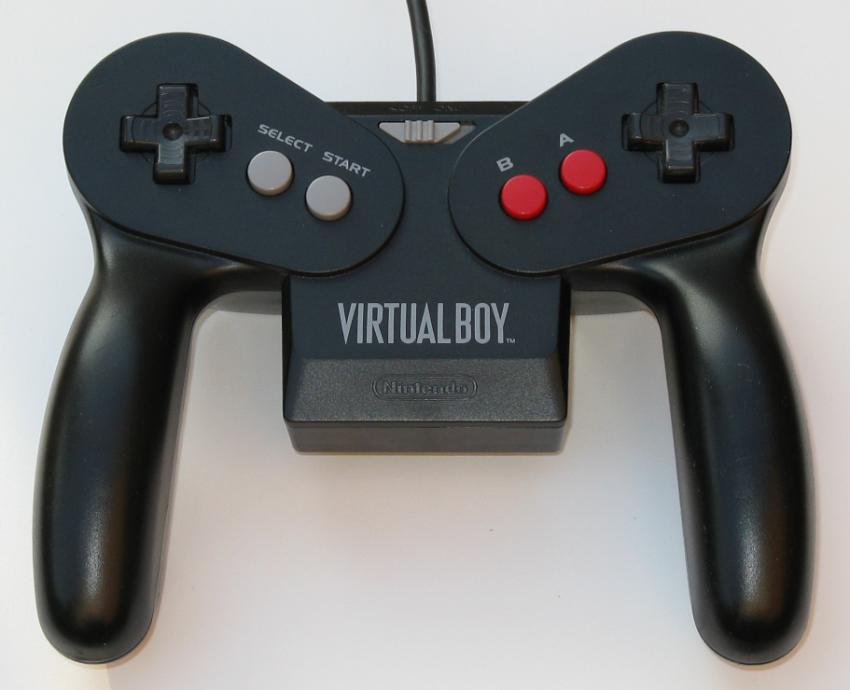
Similar to the N64 a year later, the Virtual Boy utilized a decidedly strange controller. It featured two D-Pads for instance, something I've never seen on another console. The idea was 3D games used a Z-axis, so the controller would have to be capable of moving objects in such a way. Remember, this was a time when analog controls were still largely experimental and commonly unavailable. Although only a few retail games used both D-Pads for different purposes, it was a smart move that was inevitably used by future game consoles, but with analog sticks instead. The VB controller also features A and B buttons, Start and Select, along with two trigger buttons like on the SNES. In a lot of ways, the Virtual Boy controller was a mix of Game Boy and SNES. The layout is completely symmetric, thus offering left handed gamers the ability to flip the control layout, if software allowed. Unlike the SNES controller before it, the VB's controller is very ergonomic, conforming to the hands for more comfortable usage, rather than holding the controller in one's fingers. All the buttons and D-Pads are snappy and responsive as well. Overall it's actually one of Nintendo's better controllers, which is a shame because almost nobody has ever actually used it. Instead, most people just complain about the red and black graphics.
Score: 5/5
Graphics
Of everything the Virtual Boy does, the visuals are the most controversial. The first thing anyone notices is the colors, or lack thereof. The Virtual Boy can display black and 3 shades of red onscreen out of 128 possible shades. With careful programming, it's possible to have 128 unique shades onscreen at once. With colors at least, the Virtual Boy is a bit like the original Game Boy, just with multitudes more shades available. It's sort of like looking at your average SNES game in red scale. As said prior, publications, word of mouth and much of the internet years later determined the use of only red and black was a bad idea. In theory it sounds like a bad idea, but in practice they are relatively pleasant to look at. With proper calibration, the Virtual Boy's screens are incredibly sharp and very impressive considering they're reflected off mirrors, during a time when most dedicated displays were awfully blurry. Personally, I quite like the red graphics, they are no worse than blue or green only and are nowhere near as bad as people make them out to be. I think what makes the most difference is actually playing a real Virtual Boy, with proper calibration. Take the below picture for example, when boxed in around the white page, the red on black image is hard to see. If that screenshot is all your eyes see (with black surrounding the picture), then it's an entirely different matter. I think this plays a large role in people's online perception of the Virtual Boy.
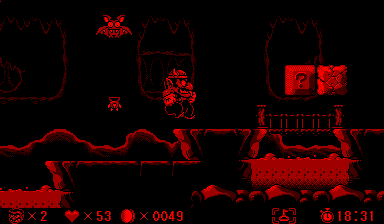
But what of the Virtual Boy's actual graphical capabilities? That's something most people tend to overlook because the red colors are too easy to pick on. The Virtual Boy is largely a 2 dimensional sprite-based console, though it's surprisingly powerful enough to render polygons in small amounts. Most of the retail games are 2D, which combined with the stereoscopic 3D makes them look like a diorama. Cool, but probably not what Nintendo wanted people to think of the system. Of its visual strengths, one of the most impressive is the Virtual Boy's very large resolution screens. Both are 384x224, making it one of the first dedicated widescreen consoles ever. For a console of this sort, the large resolution really puts the Virtual Boy leagues ahead of the Game Boy, especially if you compare something like Virtual Boy Wario Land, which had a one prequel on Game Boy (there was no Wario Land II in 1995). In CPU and graphical power, it is multiple times better than the Game Boy. In fact, one fan proved you can emulate the Game Boy on it! Yes, over on Planet Virtual Boy you can find a Game Boy emulator, you can play it with a Flash Boy cartridge. Compared to the SNES however, the Virtual Boy seems a bit weaker in some regards, but it is easy to misjudge the VB's power. You see, with two independent screens that have to be filled with graphics, the Virtual Boy's potential power is essentially cut in half. If the Virtual Boy only had to draw one screen, it could probably outdo the SNES in many areas, other than color.
What makes the Virtual Boy truly unique in its graphics, however, is its stereoscopic 3D capability. Simply put, no other console before it (or long after for that matter) could match the Virtual Boy in how well it could do 3D. Sure, there were 3D shutter glasses available for the Famicom and Master System, but those only sort of worked. Most of the time you'd only get a partial 3D effect that wasn't really believable. The Virtual Boy absolutely, truly does work, no flickering or anything like that. It may not have been very virtual, but it was clearly designed to be good at stereoscopic 3D. Unlike newer 3D formats which basically layer two screens together, the Virtual Boy has two screens completely dedicated to each eye. Close your left eye, you only see the right display, for example. Open up the Virtual Boy and you will see two dedicated screen arrays in use. In some ways, this makes the 3D more pronounced and easier to see than the layered screens of today. The only downside is the 3D depth is not adjustable, thus some people may have difficulty seeing it. The best you can do is adjust the Inter-Pupillary Distance (IPD) dial, which definitely helps in making the Virtual Boy a pain-free experience.
The red and black colors may not have been the best option, but the LED technology makes the Virtual Boy very easy on the eyes, when calibrated of course. For most people, it's easy to write off the Virtual Boy just based on that, but the surprisingly high end graphics and stereoscopic 3D that works puts the Virtual Boy much higher than others would like to admit. Despite what some people might think, Nintendo was always about quality assurance back then, even with the extremely experimental Virtual Boy. Read some of the game manuals, or the system manual, it had a lot of Nintendo quality behind it.
Score: 3/5
Music and Sound 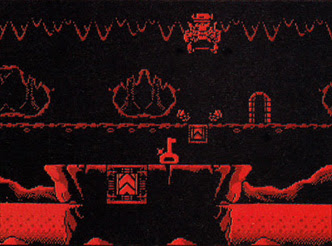
Few ever critique the sound processing of the Virtual Boy, which is strange, but understandable in a way. To put it simply, there really isn't anything special in the Virtual Boy's audio. At least, not for 1995. It is not sample-based like the SNES, or even FM and PSG-based like the Genesis. It shares its audio style and characteristics with the Game Boy and NES, though far more advanced. Virtual Boy games are thus not capable of CD level music like the SNES where instruments can sound like real instruments, but significantly more capable of dynamic and distinctive sound than the Game Boy and such.
What might catch detractors off guard is that the Virtual Boy has two speakers and every game features dynamic stereo sound. Music often transitions between each speaker, many sound effects play through the left, right or both speakers depending on which side of the screen the sound is coming from and the speakers have a lot of volume. There's also a headphone jack in case you want better immersion or have a favorite pair of headphones. Nintendo did actually sell Virtual Boy brand headphones, but they're hard to find and they're probably a bit underpowered. In a lot of ways, the Virtual Boy was leagues ahead of the crusty old Game Boy and could certainly hold up against the SNES.
Score: 4/5
Games
Like most failures, the Virtual Boy hardly received any games, thus was never able to achieve its true potential. 22 were released worldwide, 19 of which were in Japan, 14 made it to USA. Oddly, the Virtual Boy remained supported longer in the USA than in Japan. It's difficult to really judge the Virtual Boy based on its meager launch titles, but there's some definite quality to be had.
The games most people point to as being the best are Virtual Boy Wario Land, Red Alarm, Teleroboxer, 3D Tetris, Jack Bros., Galactic Pinball, Mario's Tennis, Mario Clash, Panic Bomber and Space Squash. A couple of those are pretty expensive, but 11 titles on average is a pretty good margin, that's close to half the total retail release list. Others I didn't mention are also good but less appreciated, like Vertical Force, Virtual Fishing, Nester's Funky Bowling and V-Tetris.
Some of the released games are even noteworthy in some regards. Virtual Boy Wario Land is not only considered one of the best titles, it was also the second Wario Land game ever. Wario Land II wouldn't be released for another two years. There's also Mario's Tennis, the official pack-in title that was bundled with every Virtual Boy. It might interest you to know that Mario's Tennis would be the final pack-in game for a new Nintendo console at launch until the release of the Nintendo Wii in 2006, 11 years later. Mario's Tennis was also the very first Mario Sports game, not including sports games by Nintendo that included Mario cameos, like on Game Boy and NES. Sure, there weren't any special moves or game modes in Mario's Tennis, but it included most of the main Mario characters and set in motion a massively popular sub-franchise that has been successful for years. It's strange to think one of Nintendo's worst selling consoles housed one of Nintendo's best selling series.
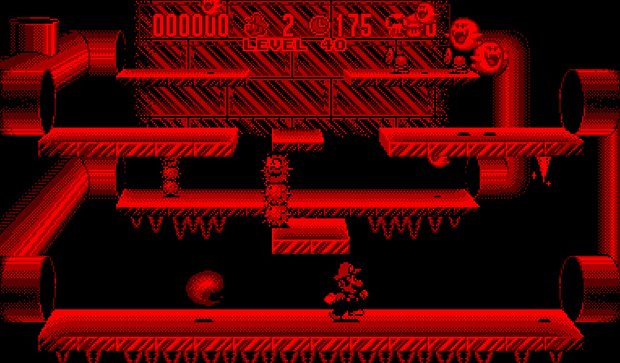
Given the short period of time the Virtual Boy had on retail shelves, it's understandable it has several significant rarities, making some of the library inaccessible to the average person. The rarest games were Japan only. Thankfully, as is the case with most game consoles, the worst games are sometimes also the most expensive (except Virtual Bowling, which is awesome), so unless you're collecting, this shouldn't be a concern.
In recent years, the Virtual Boy has garnered a lot of homebrew interest, thus extending the meager library further. Some have been released on cartridges, along with unreleased prototypes and fan translations. Still, the shortage of donor parts for new cartridges makes publishing more games difficult, that's where the popular Flash Boy accessory comes in. It's a flash cart that can hold one game at a time, but works quite well. With so few games available, having a bunch of games at once is rather pointless. Whether you're only looking to play the best titles or them all, you really need a Flash Boy to get the most out of your Virtual Boy.
Many of the retail games are quite good, on par with Nintendo's offerings on Game Boy and SNES, but none could really show off what the Virtual Boy was truly capable of. Nearly all of them perfectly handled the stereoscopic 3D, but they were also largely 2D, which lessened the dramatic impact. Red Alarm and 3D Tetris are but a few of the polygonal games available. Red Alarm in particular is just wireframes, but the stereoscopic 3D makes it easy to tell what you're doing even in a world of lines, quite remarkable really. The retail library is slim pickings for certain, but homebrews and prototypes do help to make up for that. For a failed console, the Virtual Boy is pretty decent in this regard.
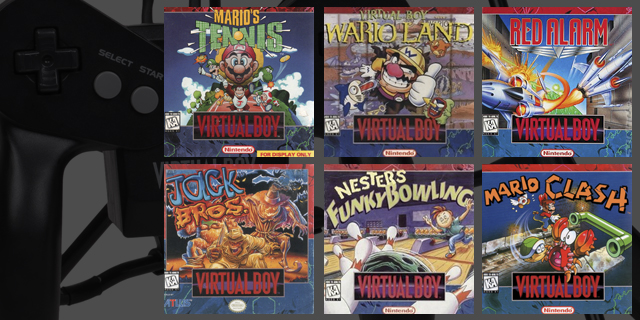
Score: 3/5
Overall 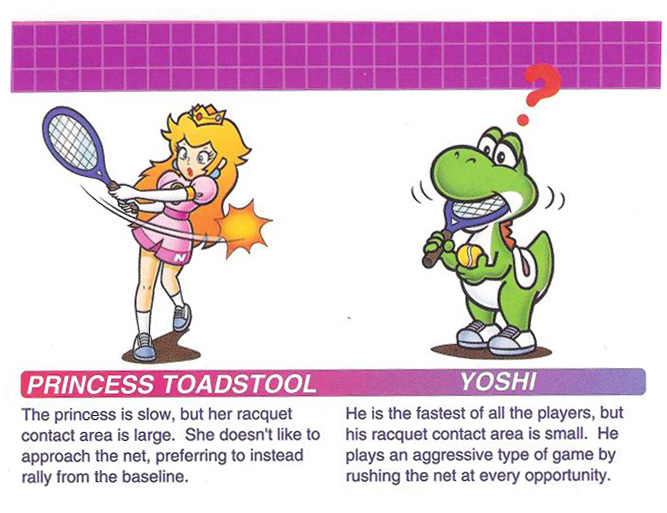
In some ways, it's easy to understand why so many people have no problem condemning the Virtual Boy as some kind of abomination, but what genuine quality there is to be had really makes it a decent system. If nothing else, the Virtual Boy is incredibly unique. It may not have very many games and the red colors can turn some people off, but it would be wrong to say the Virtual Boy can't do stereoscopic 3D very well, or make the Game Boy look primitive in its graphics. Overall, the Virtual Boy is only a disappointment because it had such incredible potential. Just for the 3D and 10 or so fun games, the Virtual Boy is worth owning. Even with it's flaws, I can say for certain it is a million times better than the 64DD, now THAT thing is terrible.
Above all, if you are interested in playing the Virtual Boy after reading this, I strongly recommend you read all the documentation that was included with the console (Planet Virtual Boy.com has them all scanned). The focus and IPD must be configured for your particular eyes and the stand must be set up correctly. Personally, the best stand position is to tilt the Virtual Boy forward so it is facing up, that way you can lean in and look down into the system. Nintendo really did design the Virtual Boy to be as pleasant to use as possible, despite circumstances. Read the manuals!
Hardware: 3/5
Controller: 5/5
Graphics: 3/5
Music and Sound: 4/5
Games: 3/5
Overall: 3.6/5
Written By: Aaron Wilcott
July 1st 2014
|